

Course: BS Thesis Research
Duration: January 2014 - June 2014
Advisor: Prof. Pramod Kumar & Jayasankar Variyar
Traditional die casting has quality issues due to porosity, shrinkage, gas entrainment because of turbulent nature of die filling. Semisolid metals processing (SSM) uses a semisolid slurry (ketchup like) for casting. When the ketchup bottle is shaken, the ketchup flows due to a reduction in viscosity. It thickens when it is allowed to stand again (known as thixotropy). The slurry is maintained between the liquidus and solidus temperatures. The thixotropic nature of the slurry is utilized during die casting where the material is forced to fill a die. The figure below shows a semisolid Aluminum billet which can be sliced by a knife 1.
Semisolid metal processing is a near net shape manufacturing process with the following advantages over die casting:
Eliminates porosity and entrainment defects because of laminar flow
Less solidification shrinkage because the material does not cool from liquid state
Increased die life because of lower temperatures
To utilize the thixotropic behavior, the microstructure of the semisolid metal alloy should be spheroidal and not dendritic 2. One way to achieve this by stirring liquid metal, which breaks the dendrites.
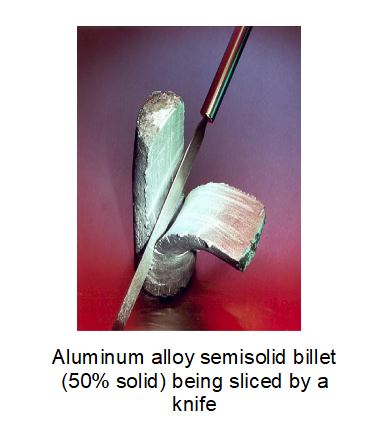
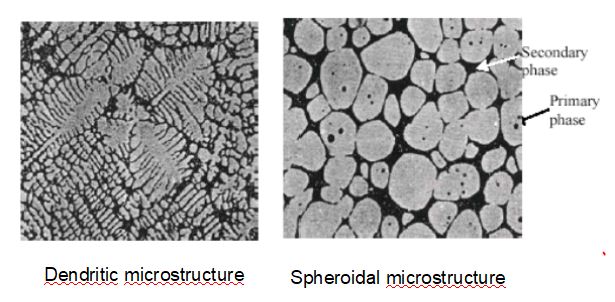
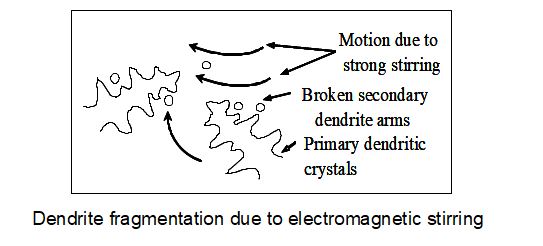
Electromagnetic stirring is a widely used stirring method because it is non-contact. It consists of circular coils placed around a vessel containing electrically conducting metal (Eg: continuous caster or a ladle containing molten Steel) as shown below3. Electromagnetic fields generated because of current flow through helical coils results induces currents (eddy currents) in the liquid metal. The combination of eddy currents and the magnetic fields produces stirring effect because of Lorentz force
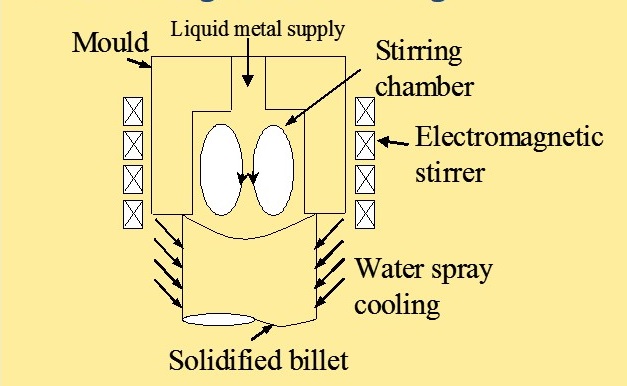
The flowchart below explains the stirring effect due to the interaction between electromagnetic field and fluid flow, which is the basis of an electromagnetic stirrer.

In continuous casting, $v_{\mathrm{molten\,metal}}\approx 2\, \mathrm{m}/\mathrm{min}$. Usually, the velocity of molten metal for computing the Lorentz force is neglected. My contribution comprised of including the effect of velocity in computing the Lorentz force. This was added as a Source Term using User Defined Function (UDF) in ANSYS FLUENT. Including the velocity couples or links the fluid flow (Navier-Stokes) and Maxwell’s electromagnetic equations.
Solved Maxwell’s electromagnetic equations in ANSYS FLUENT using User Defined Functions, programmed in C
Validated model with analytical solutions
Enhanced model functionality to include custom inputs (waveforms) of AC current
Developed CFD simulations by coupling electromagnetic and fluid flow equations
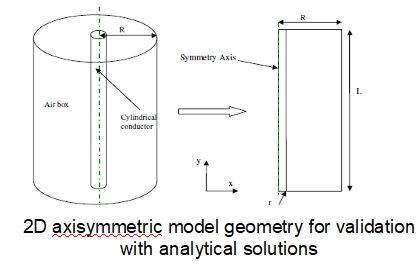
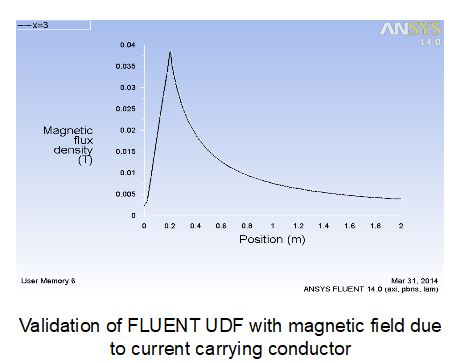
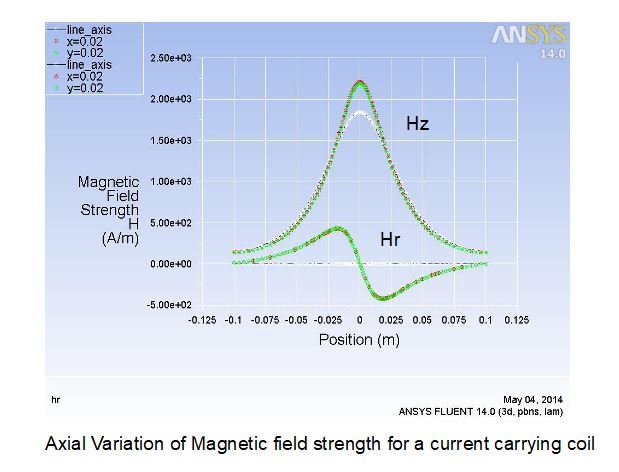
BS Thesis: Modeling of Electromagnetic Stirring of Liquid Metals
ANSYS FLUENT UDF code for solving Maxwell’s equations: Code
Customizing CFD software
Enhancing CAE model functionality
Benchmarking models with reference solution (test cases)
Writing User defined functions (UDF)
Image from Semi-Solid Metal Casting: Reducing the Cost of Copper Alloy Parts, OTA Technology Fact Sheet ↩
Image from National Facility for Semisolid Forming laboratory, IISc ↩
Image courtesy Prof Pramod Kumar, IISc ↩